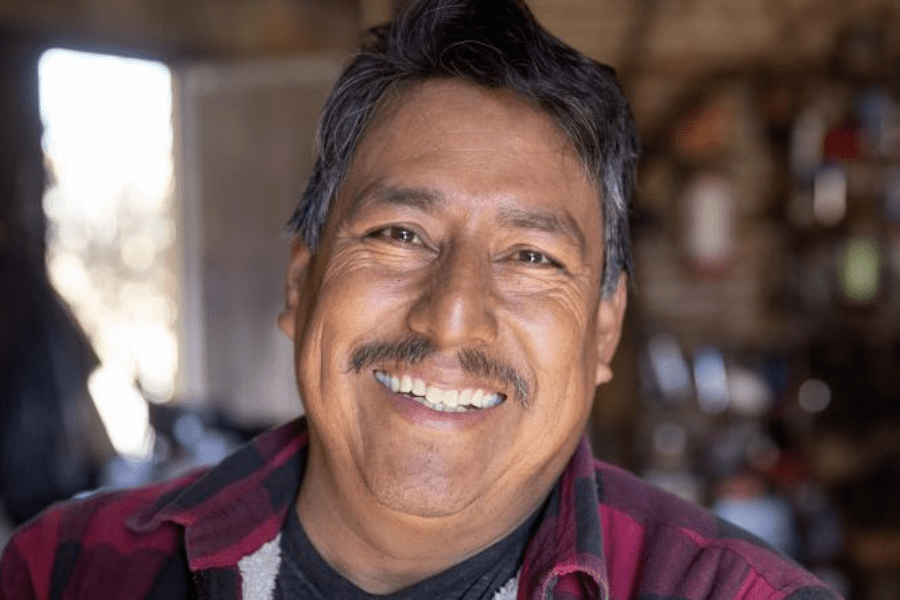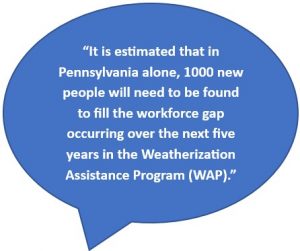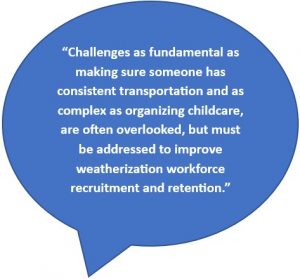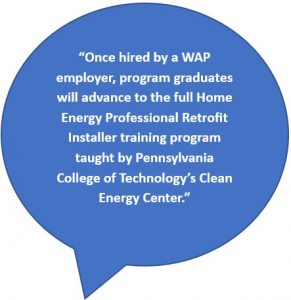Jan 2, 2024
Building Green Futures: Empowering Careers in Weatherization
Building Green Futures is an innovative workforce development project addressing the current and projected workforce gap in weatherization.


The rapidly evolving fields of clean energy, energy efficiency and renewable energy have witnessed remarkable growth in recent years. However, individuals interested in pursuing careers in these fields often face significant challenges, including a lack of awareness about available career pathways and limited access to training opportunities. Recognizing these hurdles, the Clean Energy Center at Pennsylvania (PA) College of Technology, in partnership with the PA Weatherization Assistance Program, developed an innovative workforce development project called “Building Green Futures” designed to address these issues and advance a more diverse and skilled workforce.
The inspiration behind the Building Green Futures program stems from the need to address the current and projected workforce gap in weatherization. Over the next five years, approximately 1,000 new weatherization workers will be needed within Pennsylvania’s Weatherization Assistance Program alone. This does not account for utility and private sector energy efficiency workforce gaps.
Building Green Futures takes a grassroots approach by providing support services to participants and partnering with community-based organizations to provide no-cost pre-employment training. The model for Building Green Futures was originally developed through a collaboration between the Clean Energy Center and Advance Central PA, a local workforce development board, and has been expanded to include additional partnerships with community-based organizations and local employers.

The program addresses broader labor challenges in the home energy efficiency sector, including poor retention rates, lack of workforce diversity, and fractured processes and partnerships. Building Green Futures builds intentional pathways into energy efficiency careers, with a particular focus on underrepresented groups such as women, members of the BIPOC community, veterans, youth aged 18-30, and individuals from underserved communities. This commitment is evident in the programs focus on three critical elements:
- Outreach into local communities to recruit individuals seeking a short-term career exploration program;
- Technical training and field experience to prepare individuals for employment in weatherization; and
- Meaningful connections between trainees and local employers providing weatherization services.
Partnering with community-based organizations plays a crucial role in successful recruitment, ensuring that potential participants meet the program’s requirements and possess the interest and aptitude to work in weatherization. The Clean Energy Center partners with organizations like CASA, a community-based organization focused on supporting immigrant families and individuals, for weatherization workforce recruitment and employability training. CASA leads the recruitment efforts in York and Harrisburg, and with their extensive network and expertise, CASA plays a vital role in identifying and connecting individuals to the program. The Building Green Futures program is initially being implemented in the Harrisburg and York regions of Pennsylvania, with plans to expand to other areas of the state based on demand.
The program is funded by the PA Weatherization Assistance Program’s Training and Technical Assistance funds, administered through the Pennsylvania Department of Community and Economic Development. The program’s support services are crucial in removing barriers to participation. Building Green Futures is designed to be accessible to individuals from various backgrounds and circumstances so there are no costs for trainees or employers to participate, and stipends are included for trainees to help cover basic living expenses. The project also offers additional supportive services as needed, including travel assistance, meal provisions, childcare or elderly care reimbursement, work shoes, and a basic set of tools. By addressing these practical and logistical challenges, the program improves the sustainability of the weatherization workforce and ensures that individuals can fully engage in the training and employment opportunities.
The Building Green Futures program consists of a full-time six-week training program:
- Participants undergo two weeks of technical training that covers essential topics such as OSHA 10 Safety, hand and power tool competencies, carpentry, air sealing techniques, and an overview of home performance careers. During the training, participants practice hands-on tasks aligned with several of the Retrofit Installer Badges developed by the National Renewable Energy Lab and the U.S. Department of Energy.
- Following the technical training, participants engage in a four-week field assignment with local weatherization employers, gaining real-world experience and mentoring.

A unique aspect of the program is that trainees are able to assess the career before committing fully, while employers can evaluate trainees and their suitability for full-time employment. Once hired by a WAP employer, program graduates will advance to the full Home Energy Professional Retrofit Installer training program taught by Pennsylvania College of Technology’s Clean Energy Center. For those who are not immediately placed after the field assignment, Building Green Futures facilitates connections with other local employers through exclusive networking recruitment events, aiming to secure them in full-time building performance careers.
The potential results of the Building Green Futures program are two-fold. First, job placement is a primary goal, and the program’s structure, including the field assignment with local weatherization employers, increases the likelihood of successful employment outcomes. Trainees can evaluate their compatibility with the career path and gain valuable real-world experience. Employers can assess trainees’ skills and suitability for long-term employment, leading to more informed hiring decisions. Secondly, the program will diversify the workforce in the energy efficiency sector. By reaching out to underrepresented groups and removing barriers with targeted support, Building Green Futures creates opportunities for women, BIPOC individuals, veterans, youth, and underserved communities to participate and excel in clean energy careers.

In summary, Building Green Futures is an innovative workforce development project aimed at addressing the challenges faced by individuals interested in pursuing careers in energy efficiency and renewable energy fields. By providing pre-employment training, field experience, and supportive services, the program fills critical gaps in awareness, recruitment, and retention. Building Green Futures not only equips participants with essential skills and certifications but also fosters meaningful connections with local employers. With its focus on diversity, equity, and inclusion, the program aims to create a more sustainable and inclusive workforce in the clean energy industry.
This article was originally published in the NASCSP Blog and is republished with permission.





